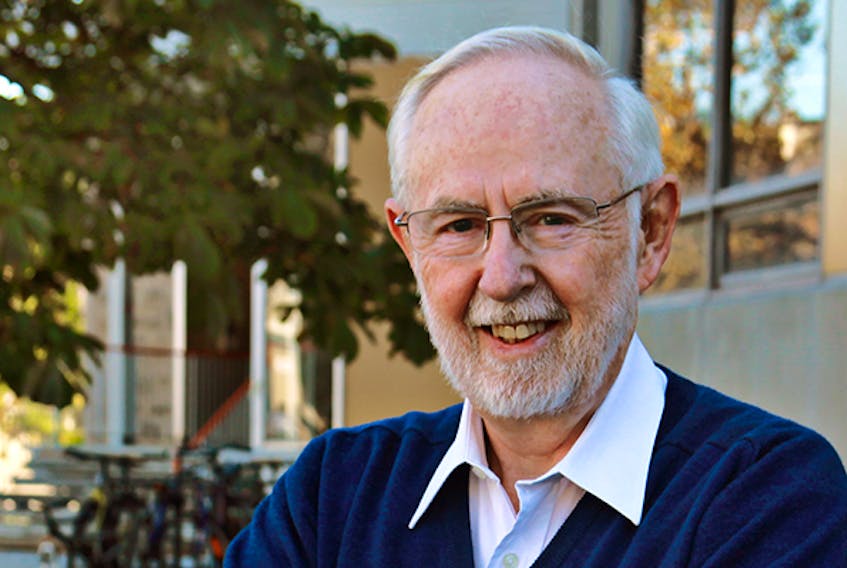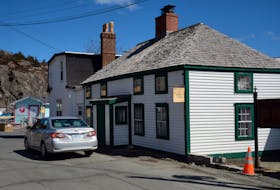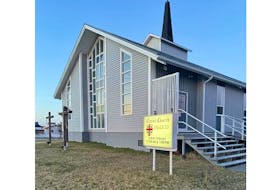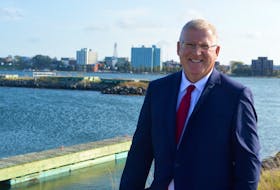SYDNEY, N.S. — As a Nobel Prize-winning physicists, Art McDonald has dedicated his career to better understanding the building blocks of the universe.
These days, however, the Sydney native is focused on building ventilators to help with the COVID-19 pandemic.
Since March 23, McDonald has been leading a team of Canadian scientists, engineers, doctors and manufacturers as part of Mechanical Ventilator Milano, an international collaboration to develop a simple-but-powerful ventilator that could be easily mass-produced with readily available parts.

Within six weeks, the group, which included teams working at laboratories, institutes, universities, and companies across Italy, Canada and the United States, received approval from the U.S. Food and Drug Administration. Then on Tuesday, they reached a major milestone when the Government of Canada ordered 10,000 of the machines from Canadian manufacturer Vexos to help in the case there’s a second wave of COVID-19.
“Let me say, all members of our team are extremely proud that they’ve been able to find something where their expertise was relevant to a need during the COVID crisis and I feel same as they do — I’m just happy to be able to do something to help on this and that the experience I had gained in the past by leading groups of scientists and engineers on a major science project turned out to be of fairly direct relevance to leading this project, at least in Canada,” McDonald, 76, told the Cape Breton Post from his home in Kingston, Ont., where he is a professor emeritus at Queen's University.
Minister of Innovation, Science and Industry Navdeep Bains credited McDonald and his team for “making tremendous contributions to fight COVID-19.”
“These new, easy-to-build ventilators are a great example of Canadian innovation at work and will be a key resource for our hospitals to save lives," Bains said in a media release.
The designs and testing for the ventilators have been open-source published so any manufacturer, anywhere in the world, has the basic design and license to produce them.
“We’ve made it available such that if there’s a country that’s having problems and needs to manufacture a relatively inexpensive device, the information is there for them to do it,” said McDonald, who noted that several Canadian philanthropists helped support to the project, led by Pictou’s Donald Sobey, a Queen’s alumnus and the chair emeritus of Empire Company Ltd.
That money helped pay for vital testing equipment, he said, adding that more than 50 people in Canada worked without pay on the project for several months.
“All of them were basically doing it as a humanitarian effort during the COVID crisis,” he said.
A Sydney Academy graduate, McDonald was co-awarded the Nobel Prize in 2015 after he helped discover that neutrinos created in nuclear reactions in the sun have mass, something that essentially meant all the textbooks on the subject had to be rewritten.
When asked why a Nobel laureate was called on to help build a device that he described as essentially “two valves — an inlet valve and an outlet valve —controlled very carefully by programmable microcomputers,” he said it really isn’t all that different from his previous research at the Sudbury Neutrino Observatory 2,100 metres underground in Sudbury, Ont.
“What did I win the Nobel Prize for? For leading a group of highly skilled people, which included scientists, engineers, in some cases interactions with manufacturers to make special pieces of equipment, engineers who excavated the large cavity underground, engineers who provided project management expertise to build a large project like this. The team that we brought together to assist us in project management had previously built a nuclear power plant in another country. The sort of skills that you need to have in order to do a very complicated and major project are not so different than the type of skills that you have to have to build a device like this — we do it all the time.”

In fact, before the ventilator project, the same team had been building a large detector they hope will eventually help solve one of the biggest mysteries in our galaxy: what is dark matter?
The substance makes up more than 80 per cent of the universe but scientists still don’t understand it.
“There’s five times as much mass in between the stars as there is in the stars themselves, gravity tells us, but we have no idea what those particles are that make that up — they’re not like anything that has been observed in our laboratories,” he said. “We think it may be because there has never been enough energy on Earth to produce such particles and therefore one of the main missions of the highest energy accelerator in the work at CERN is to try to produce them for the first time since the Big Bang, but because they hold our galaxy together, we know they’re there, presumably produced in the Big Bang but an entirely different form of matter than what we’re made of because they don’t exhibit any of the properties of the particles that make us up. It’s a very major quest within the world of physics and astrophysics.”









